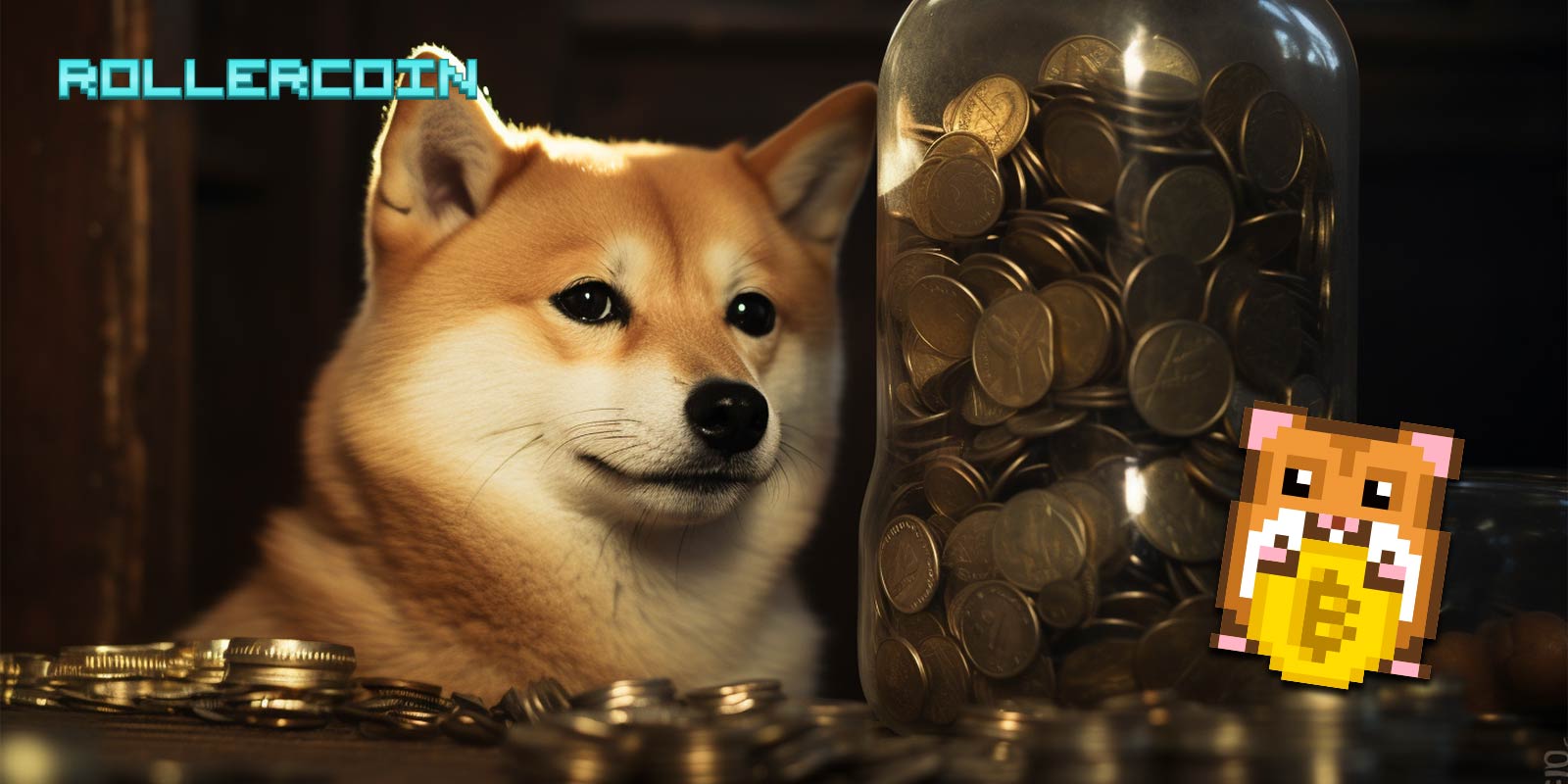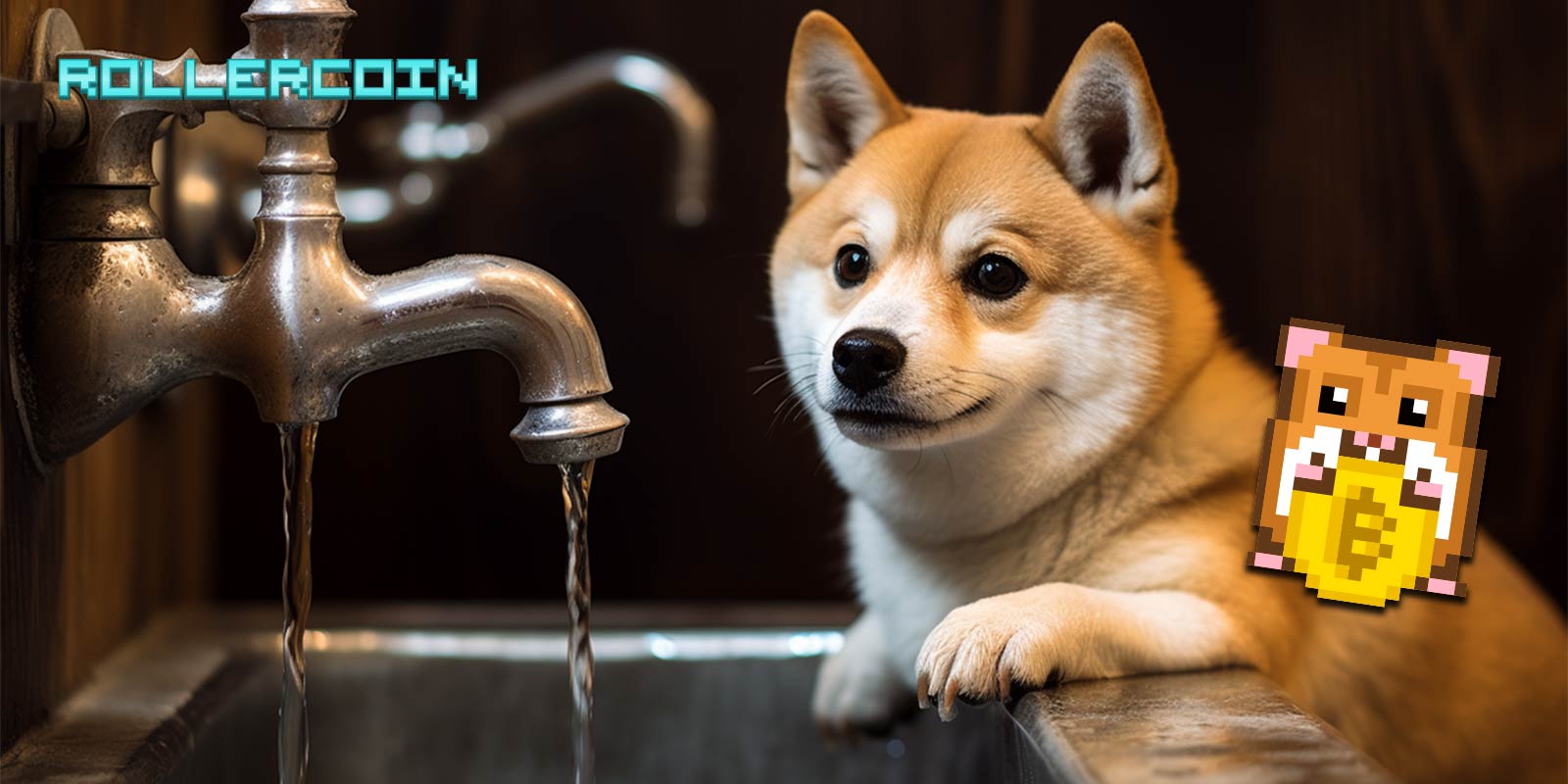Dogecoin has positioned itself as the top-performing meme coin on the internet. The coin that initially began as a joke sits at #8 among the top 10 cryptocurrencies by market capitalization. Dogecoin gained prominence and hit the headlines when it rose by 13,350%. In the next section, we will cover trading Dogecoin for beginners and shed light on how to start Dogecoin trading.
How to Trade Dogecoin for Beginners?
What is Dogecoin Trading? Dogecoin trading involves buying and/or selling Dogecoins for profit. A trader can either buy when the price is low and sell when the price rises; or borrow when the price is high and repay when the price goes down, therefore, making a profit. While this is only a basic overview of what lies behind trading Dogecoin, there are many more methods of trading. In the sections below, we will cover some of the most popular ways of trading Dogecoin for beginners. We will look at Arbitrage trading, swing trading, day trading, and Dogecoin scalping.
Remember, after choosing a coin to trade and trading strategy, the next thing is to research the market. Study market volumes, trends, patterns, and micro and macro factors that affect the price of cryptocurrencies, come up with a set of indicators for predicting what happens next, and finally, make sure you can comfortably combine technical and fundamental analysis methods.
Researching the market will equip traders with enough information to understand every risk associated with trading Dogecoin. Cryptocurrencies like Dogecoin are highly volatile; their price undergoes lots of movements that are not easily predictable. This makes the amount of profit as significant as the amount of loss, just in case a trade performs contrary to expectations.
Traders need to also understand the regulation of Dogecoin and the overall cryptocurrency regulation climate in their jurisdictions. Some countries like China and Nigeria have permanently banned cryptocurrencies, and trading them could land you in trouble. Continue reading the sections below to understand where to start, and if you are wondering, “How Do I Trade Dogecoin?”
Step-by-step Guide on Trading Dogecoins for Beginners: How to Start Trading Dogecoin
In this section, we will cover how to trade Dogecoins – the listed steps are essential, particularly for someone who is starting out in Dogecoin trading as a beginner and is wondering how do I trade Dogecoin, how do you trade Dogecoin.
Determine how much Bitcoin you intend to trade and build a strategy – Setup asset management and risk management plan to influence the direction of your trading business. You also need to determine how much Bitcoin you require to get started with trading. Remember, in crypto, one trades what one can only afford to lose.
Choose the right cryptocurrency exchange – Find out the best free Dogecoin trading exchanges and platforms. You will filter your preferences using each exchange’s trustworthiness, proof of reserves, security and privacy features, 2-factor authentication, customer support, KYC, and AML requirements. Also, you need to ensure your preferred exchange is well-regulated. Some suitable cryptocurrency exchanges where you can start trading Dogecoin for beginners include Binance, Wazir, Coinbase, and CoinDCX, among several others.
Sign up for an account on the exchange, complete KYC, and deposit funds – There are various checks you need to complete when signing up for an account on an exchange. These checks include KYC and AML requirements, which means you need to have an identification card or passport near you and a device with a good camera. The signup process will involve activating two-factor authentication to prevent unauthorized logins and also protect your funds. Once registered, load your account with funds by depositing either crypto or fiat into the account. Some common deposit methods include peer-to-peer (P2P), electronic transfers, credit/debit cards as well crypto transfers.
Create a Dogecoin trading strategy and a risk management plan – carefully research the Dogecoin market and study the crypto industry, market patterns, trends, and historical price performance. This will kick off your trading journey in Dogecoin not as a beginner but as a well-informed beginner Dogecoin trader.
Buy Dogecoin and start your Dogecoin trading journey – If you loaded your account with fiat or another type of crypto that is not Dogecoin, convert the funds into DOGE and start your trading journey. Remember, you also need to know the amount of Dogecoin you want to trade with. Note that the amount should always be within your means.
Any profits and extra Dogecoins should be stored in a cold wallet, not on the trading exchange – Avoid storing all your cryptocurrency funds on the exchange wallet. Exchanges are prone to hacking, which poses lots of risk to your wallet. Find a suitable cold wallet and transfer any profits and crypto funds you do not intend to use in the near term.
Dogecoin Trading vs. Investing
Dogecoin trading and Dogecoin investing are two different things. However, they both have one goal, and that is making a profit. Investing involves buying and holding on to the crypto asset to make a long-term profit when the price goes high. The investor can hold for as long as 6 months to a few years. Some investors have been holding on to Bitcoin since 2010. On the other hand, trading Dogecoin involves buying and selling DOGE to make a profit based on short-term price movements.
Dogecoin Trading Methods
You can trade Dogecoin in three common methods. These include day trading, swing trading, or scalping.
Day Trading – As the day trading name suggests, here you trade Dogecoin throughout the day with the focus of benefiting from short-term price movements. At the end of the day, the day traders close their sessions, count their profits (or, sadly, the losses), and then wait until the next day.
Swing Trading – As a swing trader, your work is to spot price trends. Particularly the start of a price trend and executing a trade in your favor. Once the trend is over, you need to close the trade and take profit. The execution of the trade within the price trend is what’s called a swing. You can swing any cryptocurrency, including Dogecoin. Swing traders spend minimal time observing market patterns, unlike day traders.
Scalping – Scalping Dogecoin involves trading extremely short price movements to reap profits multiple times. Scalpers conduct hundreds of daily trades by focusing on short-term price swings.
Analysis Methods: How Does Dogecoin Trading Work
Traders use two broad categories to predict the price of assets. These categories are distinct depending on various factors that influence the price action of cryptocurrencies. On the one hand, there is the use of past historical performance to determine the current and future direction of a cryptocurrency’s price. This is called technical analysis. On the other hand, there is the use of current figures and statistics and determining whether the numbers seen reflect the true value of the cryptocurrency. This method is called fundamental analysis. Dogecoin traders use a combination of the two methods to help forecast Dogecoin price action.
Fundamental Analysis for Dogecoin Trading
Dogecoin’s fundamental analysis involves evaluating the coin’s true value by tracking down news, events, technical development, founding teams, regulations, and industry metrics. The fundamental analysis makes the assumption that the true value of a crypto asset should not necessarily rely on price or historical price.
Technical Analysis for Dogecoin Trading
Dogecoin technical analysis relies on how past historical price performance of the asset determines its present and future performance – and how trends and price movements are likely to remain repetitive in the future. We love to think of technical analysis as a way of visualizing the statistical journey of an asset’s price action using past performance.
Technical Analysis vs. Fundamental Analysis: Which Method Is Better for Trading Bitcoin?
It is easy to use fundamental analysis and make a pretty correct conclusion based on the true value of a technology. However, the true value of technology does not necessarily reflect the performance of that technology or even the price of an asset. On the other hand, not all past market patterns will repeat themselves, and, therefore, there is no guarantee that the forecast will turn out as expected.That’s why we recommend a blend of both methods of analysis to position your predictions closer to price action. A combination of both methods has a high chance of delivering the best results.
Dogecoin’s Stock-to-Flow Model
The current circulating supply of Dogecoin is 138,865,926,384 DOGE. This is also the maximum supply of coins across the market. An appropriate stock-to-flow model for Dogecoin would rely on evaluating Dogecoin’s current supply, changes in volume, and historical price action to forecast the coin’s price movements.
Does Stock-to-Flow Dogecoin Model Work?
Dogecoin’s stock-to-flow model works reliably when determining the future performance of the meme coin. The only problem is that the trends and movements could perform contrary to the model’s rough estimations during times of boom and bust. The stock-to-flow model generates sell signals when the actual price of Dogecoin goes above the model’s estimations. For a buy signal, the price has to drop below the model’s estimate.
Dogecoin Trading Terms
In this section, we are going to discuss some important terminologies that you will come across if you want to engage in buying and selling Dogecoin for profit. Remember, this guide is written with newbies in mind, especially those looking for information on how to start trading Dogecoin.
Order Book – This is a list of trading orders that traders have placed on an exchange. The order book lists BUY orders as bids; this is because an exchange uses a bidding system to price Dogecoin or any crypto in its model. Sell orders appear as an ask because interested buyers will request the Dogecoin using a particular asking price.
Brokers – A Dogecoin broker sells DOGE to customers at a price higher than the market price or at a small fee. A good example of a brokerage platform is CoinMama.
Trading Platform – A trading platform, more or less, uses an automatic system that matches interested crypto buyers with sellers using a match-making algorithm.
Marketplace – A Dogecoin marketplace allows traders to create individual profiles and list Dogecoins they are selling or buying. An interested buyer or seller only has to place an order on a trader’s profile on the marketplace and wait for it to be executed through P2P.
Dogecoin margin trading – Dogecoin margin trading is the use of borrowed funds to execute a trade on an exchange. This means that a trader can execute a trade without enough funds in his wallet.
Market Order – Also referred to as an instant order, allows a trader to execute a buy or sell order at the market price. Traders just need to place their market order on an exchange, and then the exchange matches the order using the match-making algorithm.
Limit Order – A limit order allows traders to set up a system where they can buy or sell a given asset when it hits a particular price. The trader inputs the maximum and minimum price that a trader is willing to buy the asset at and the price they want to sell at, respectively. Once the price hits that particular point, the exchange executes the trade automatically.
Stop Loss – The primary advantage of a stop-loss is limiting the potential loss on a trade when the price performs contrary to expectation. Stop losses are a risk mitigation feature for traders who want to minimize risks in their trades.
Dogecoin arbitrage trading – This is a form of trading where the trader takes advantage of price differences across different exchanges so as to make a profit by buying lower from one exchange and selling higher on another exchange.
Dogecoin Common Trading Mistakes
Not creating a trading strategy – Having a trading plan helps you make the right decisions, understand your risks and help you set the right goals for your trading business. Besides, a trading strategy will prevent you from making wrong decisions when trading Dogecoin. If you start trading Dogecoin without having a good strategy, you are likely to fail desperately. Always take time to learn and improve your strategy. Sometimes it might not work out, and you probably need to adjust it. Also, join forums where traders discuss what they do and find out what they could be doing that you are not doing. The best Dogecoin traders are self-made.
Safekeeping Dogecoin holdings on the exchange instead of a wallet – Exchanges are prone to hacks, which makes your funds vulnerable to theft or loss. Avoid keeping the crypto funds you are not using on the exchange. Instead, pick a suitable cold wallet and store your Dogecoin profits.
Fear and Greed – Do not trade with fear or greed. Fear stands out as a common hurdle when trading, particularly the fear of missing out on a trend or the fear of losing your money. You need to trade cryptocurrencies with a firm and solid understanding of the market and avoid being greedy or following up with fear, uncertainty, and doubt (FUD).
Not conducting technical and fundamental analysis – It is important to analyze charts, check news and events as well as analyze the Dogecoin market both technically and fundamentally. This will help give you a peak at how the market numbers look and how they could shape up in the future.
Investing more than what you can afford to lose – Never ever invest more than you can afford to lose. Some folks have been unfortunately unlucky after losing their life’s savings on crypto trading. You must have heard about the gentleman who shared that the FTX exchange went down with his life savings of $2 million during the 2022 Sam Bankman Fried crypto contagion.
Frequently Asked Questions
How Do I Trade Dogecoin?
Just sign up for a trading account on an exchange, deposit funds to the account’s wallet, draw a plan, and pick goals to accomplish in your trading journey. Do not forget to conduct both fundamental and technical analysis before executing your first Dogecoin trade. We bet we answered how do you trade Dogecoin.
Can I Buy and Sell Dogecoin the Same Day?
Can you buy and sell Dogecoin daily? Yes. You can trade the cryptocurrency market at any time since it is open 24 hours a day. This is unlike the stock exchange, which only operates during business hours.
What Is Dogecoin Margin Trading?
Dogecoin margin trading is the use of borrowed funds by traders to open new positions without necessarily having the full amount in their wallet.



